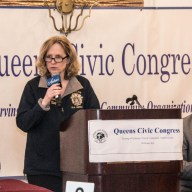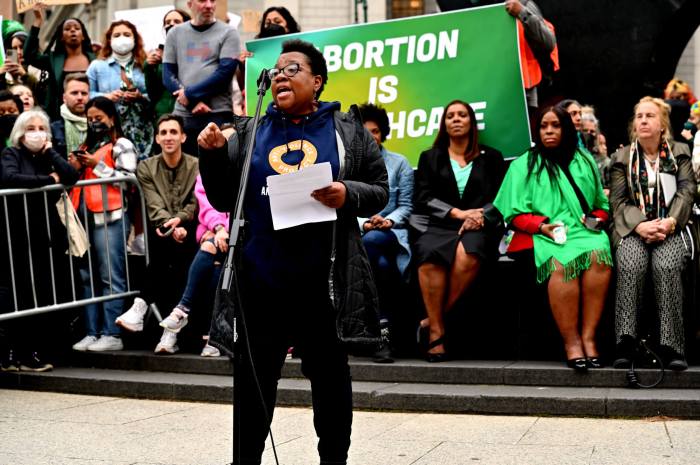By Philip Newman
An ear-splitting boom jarred Ebony Dixon awake in her St. John's University dorm. Outside, Greg Streck’s conversation with a friend was drowned out by a screaming jet engine. Unimaginable had struck two blocks away.
Dixon and Streck were among scores of students who fled the St. John’s University Manhattan campus when terrorists destroyed the World Trade Center Sept. 11.
The Manhattan campus, shut down since the attack, reopened Jan. 16 with Father Michael Carroll, executive director of all St. John’s campuses, cutting a ceremonial ribbon and welcoming students, faculty and employees back to the 10-story building at 101 Murray St.
“I was with a friend on our way to Pace University, where I also take classes,” said Streck, who lives in the St. John’s dormitory and studies insurance and finance.
“We had reached the corner of Murray Street and Greenwich Avenue when this noise from a plane kept getting louder and louder. Then an explosion and a fireball. I said to my friend, ‘Get ready to duck.’”
Streck said that as they walked eastward, they could see flames billowing from the World Trade Center.
He ended up spending the night at Pace before going to the school’s Westchester campus.
Dixon, a sophomore studying risk management, said that after the noise awoke her, she rose and went to a window facing the West Side Highway.
“Hundreds of people were running down the highway, running away from something and looking up at something,” she said. “I switched on the television and then I knew. I called my mother in Rosedale, my Dad at his job in Brooklyn, told them I was OK and got dressed. I packed a few things in a small bag and ran, along with my roommate, to the Chambers Street subway station. I knew if I could get an E train, I would be OK.”
She said all went according to plan until she and a friend got to 42nd Street.
“They stopped the train and we walked around Times Square for hours until service went back into effect. My mother was, of course, glad to see me but. But she knew where I was the whole day as I had kept her up to date with calls.”
Evacuation of the St. John’s Manhattan campus was completed before the collapse of the first of the Twin Towers. Operations were moved to the Queens campus.
In the meantime, the campus was used by the Red Cross as a respite center until mid-December. During that time, 542,000 meals were served, 1.4 million snacks handed out, first aid was administered to 21,803 people and more than 14,000 rescue and construction workers stayed overnight.
“There was a room with easy chairs and television, a massage center and other facilities,” said Jody Fisher, director of media relations for St. John’s. The university has on display photos of the school’s role as a respite center. The Red Cross and those who benefited praised St. John’s for its generosity.
The Murray Street building sustained some damage to its heating and ventilation system and elevators but almost nothing a passerby would see, Fisher said.
“Our custodian staff, at the risk of their own lives, rushed all over the building shutting ventilation ducts and saving the building from being inundated with ash and other debris,” Fisher said.
The Manhattan campus of St. John's opened in June 2001 following a merger with The College of Insurance. Under the agreement, TCI was renamed The School of Risk Management and is a unit of St. John’s Tobin College of Business, which is observing its 75th anniversary.
Reach contributing writer Philip Newman by e-mail at Timesledgr@aol.com or call 229-0300, Ext. 136.




























